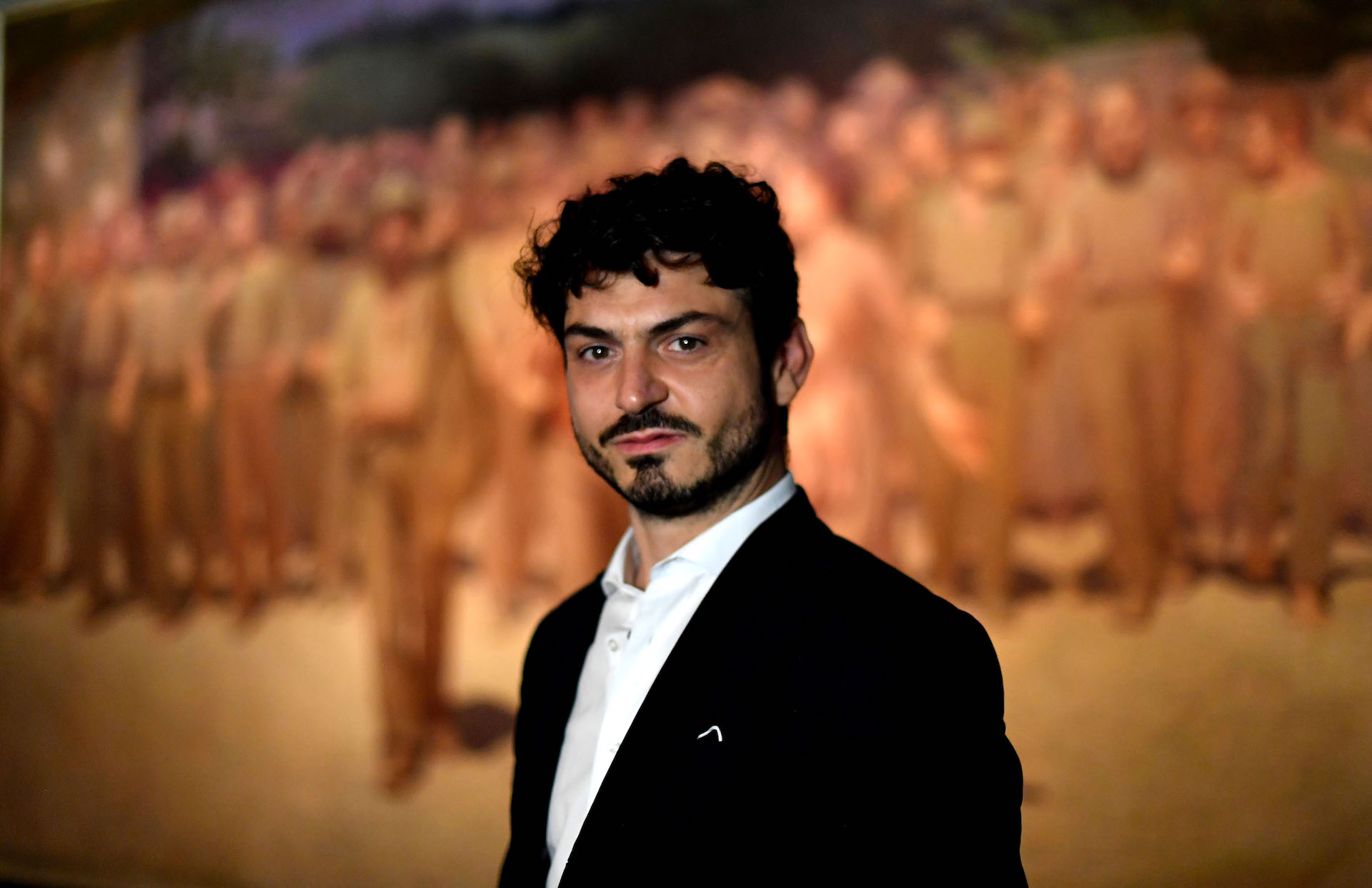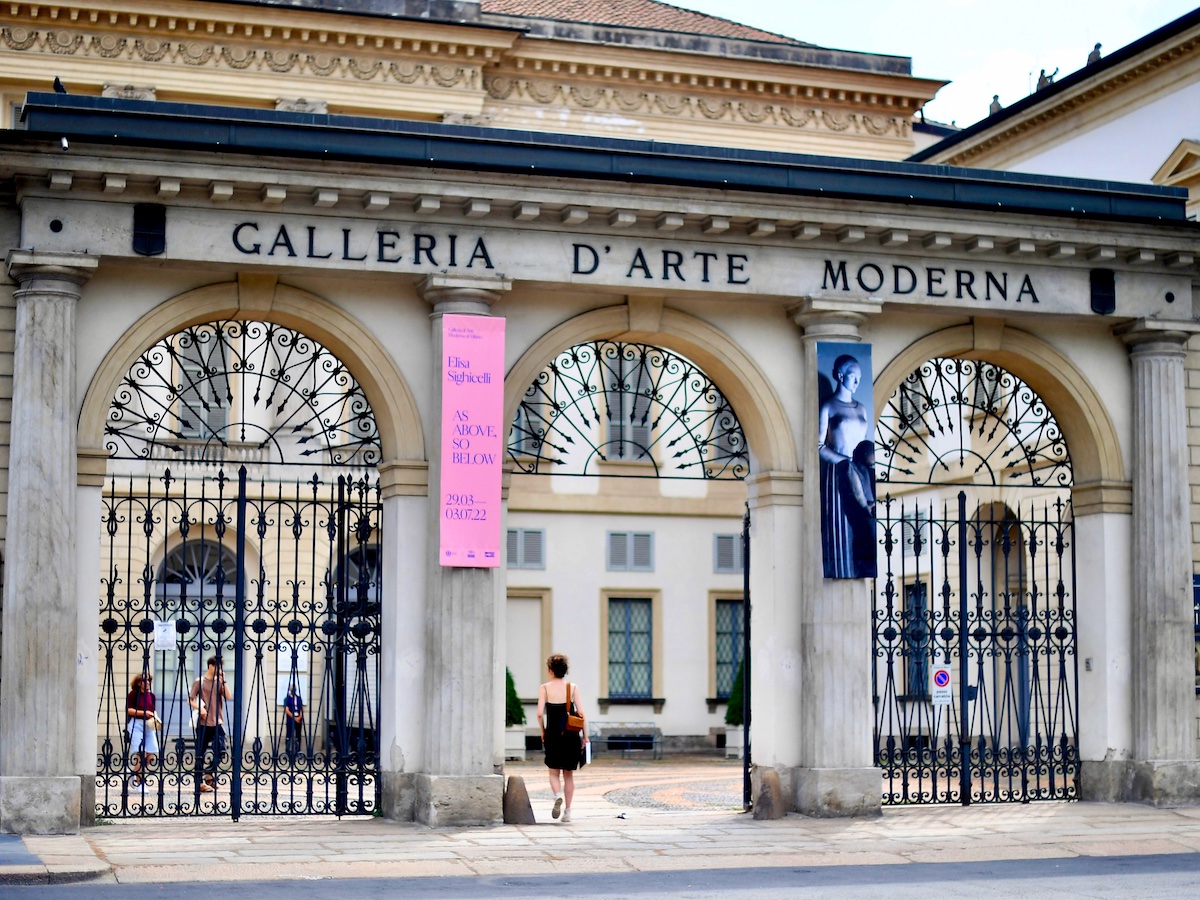Culture. The fourth state of Pellizza da Volpedo returns to Milan in a new installation at the Gallery of Modern Art
Culture. The fourth state of Pellizza da Volpedo returns to Milan in a new installation at the Gallery of Modern Art
Milan, July 6 2022 – From tomorrow, Thursday 7 July, the painting "The Fourth Estate" by Giuseppe Pellizza da Volpedo will once again be visible in the permanent collections, on the first floor of the Gallery of Modern Art in Milan. The work returns permanently to the GAM after a period of exhibition at the Museo del Novecento which began in 2010 on the occasion of the opening of the museum.
"We are happy that The Fourth Estate has returned home, with a new exhibition that enhances its pictorial quality and disruptive force, and with a closeness on the part of the visitor that allows an exciting direct relationship with the masterpiece – stated the councilor to Culture Tommaso Sacchi –. I thank Banco BPM for its enthusiastic support of this cultural operation, destined to mark a fundamental step in the history of the Modern Art Gallery".
The new location, in fact, was designed to make the work visible in the best possible conditions, both from a distance which reflects its imposing formal setting, and from a closer position, from which the visitor will be able to recognize a pictorial technique of extraordinary skill and complexity. The dialogue between this environment and the adjacent Ballroom also allows for a series of shots that enhance the scenographic power of the painting, thus allowing the image to express itself in all its potential.
Exhibited between the room dedicated to Segantini and the one dedicated to Previati, where Maternity is visible, coming from the collection of Banco BPM, recently granted on loan for the next three years, The Fourth Estate finds here an adequate location also chronologically, which places it in continuity and in dialogue with the surrounding works, in a path that summarizes in an exemplary way, through a series of absolute masterpieces, the transition from the nineteenth century to the twentieth century.
The restaging of the painting was carried out thanks to the contribution of Banco BPM."A few weeks after the event which saw us inaugurate a fruitful collaboration with the Municipality of Milan through the granting of Gaetano Previati's Maternity for the next three years, we are proud to continue with the support for the new exhibition of the Fourth Estate by Pellizza da Volpedo, again here at the GAM – declares Umberto Ambrosoli, president of the BPM Foundation and of Banca Aletti – Both key works of Divisionism, the Fourth Estate is in the wake of Maternity of Previati to overcome it and pave the way for the 900th century, for a new way of symbolically understanding artistic expression and thus inaugurating a new era. Banco BPM has always paid particular attention to the promotion of cultural heritage, also through collaboration with institutions and local authorities, aware that investing in culture, sharing prestigious works that represent an excellence of our national artistic history, means encouraging social progress as well as economic progress. With this new collaboration with the Municipality of Milan and the Gallery of Modern Art, we confirm our support for initiatives that contribute to increasing the cultural background of citizens and disseminating beauty and culture."

STORY OF A MASTERPIECE
An emblematic work from an artistic, technical and social point of view, The Fourth Estate is the masterpiece of Giuseppe Pellizza da Volpedo (1868-1907). The scene, set in a square in the painter's hometown, represents the protest of a group of workers, whose march towards a bright future claims the cohesive strength and dignity of work from which the redemption of the people must begin.
It is a monumental painting on which Pellizza worked between 1898 and 1901, years characterized by strikes, protests and demands of the working class, of which painting became the spokesperson. The creation of the painting required the painter a long period of study that lasted ten years. In fact, three previous versions are known: Ambassadors of Hunger (1892), Fiumana (1895) and The Workers' Walk (1899) close to the definitive work, which the painter, inspired by the writings of Jean Jaurès on the French Revolution, entitled The Fourth Estate .
Presented to the public at the Turin Quadrennial in 1902, the painting remained unsold, but quickly became a very famous and reproduced symbol. In 1920, in the incandescent climate of the Red Biennium, The Fourth Estate reached Milan on the occasion of a monographic exhibition at the Pesaro Gallery. The outcry aroused was such that it promoted a public subscription to secure the canvas for the city, finding a place in the Balla room of the Castello Sforzesco and then moving to the Gallery of Modern Art in the current location of the Villa Reale.
After World War II, the painting was transferred to Palazzo Marino, seat of the town hall, as a symbol of the conquest of democracy and the reappropriation of rights. It is no coincidence that in 1979 it was chosen by Bernardo Bertolucci as the incipit of the film Novecento.
Rediscovered as a masterpiece of Italian painting at the same time as the flourishing of studies on Divisionism and the exhibition in London and Washington, in 1980 the painting returned to the museum rooms. After a decade-long interlude, during which it marked the isolated and spectacular incipit of the new Museum of the Twentieth Century opened in 2010, the monumental masterpiece returns today to the Gallery of Modern Art.
THE "SPLIT COLOR" TECHNIQUE
Considered from time to time a manifesto, an icon or a symbol, The Fourth Estate is first and foremost a masterpiece of Italian painting, which brings together an illustrious tradition, enlivened by a modern style and technique.
Pellizza carried out a large quantity of studies, arriving at the creation of large preparatory cartoons both for the characters in the foreground and for the group behind them, divided into linked groups and studied by having his fellow villagers and family pose; She then transferred the composition onto the final canvas with transparent papers. The technique is modern, scientific and safe; the layout of the scene and the gestures of the characters show the author's broad figurative and historical-artistic culture, enriched by the study of Renaissance works, in particular Raphael's School of Athens - also studied through the cartoon preserved in the Ambrosian Library of Milan –, Leonardo's Last Supper with the rendering of the "motions of the soul", and the symbolic strength of Michelangelo's gestures.
The canvas is painted with small touches, lines of pure color, obtaining a dense texture of filamentary brushstrokes. This technique, theoretically supported in Milan by Vittore Grubicy and developed starting from the penultimate decade of the nineteenth century, in parallel with the French experiences, is based on the use of "divided colours", i.e. not mixed on the palette but spread pure on the canvas: the synthesis occurred in the eye of the observer. The brilliance and brightness of each pigment was thus kept intact, starting from the laws of color perception theorized by Michel-Eugène Chevreul and Ogden Rood.
However, if the French pointillists were interested in the more scientific aspects of color theory, the Italian pointillists tried to obtain luministic effects capable of suggesting or accentuating emotions and feelings. Pellizza approached this technique around 1892, developing it in works such as "Sul fienile" and the Procession, quickly becoming one of the main representatives of Divisionism, together with Giovanni Segantini and Gaetano Previati.
Gallery of Modern Art in Milan, the largest municipal collection of nineteenth-century works

Updated: 08/07/2022
